Imagine what any movie studio executive would think after touring Disneyland or Universal Studios Florida. They would be absolutely speechless at the pleasant and smart blending of media; movies brought to life; gift shops packed with memorabilia; families building concrete connections to corporate brands!
And better yet, the “studio” style parks coming online during the 1980s and 1990s (Disney’s Hollywood Studios [1989], Universal Studios Florida [1990], Warner Bros. Movie World [1991], and MGM Grand Adventures [1993]) proved that such enterprises could also be cheap. Under the guise of visiting a “real” movie studio, big, boxy, tan showbuildings and façade-lined streets could populate these parks. Owning a theme park no longer required the detail and immersion of Magic Kingdom. Instead, anyone could place a movie’s name on pretty much anything.
Paramount Parks
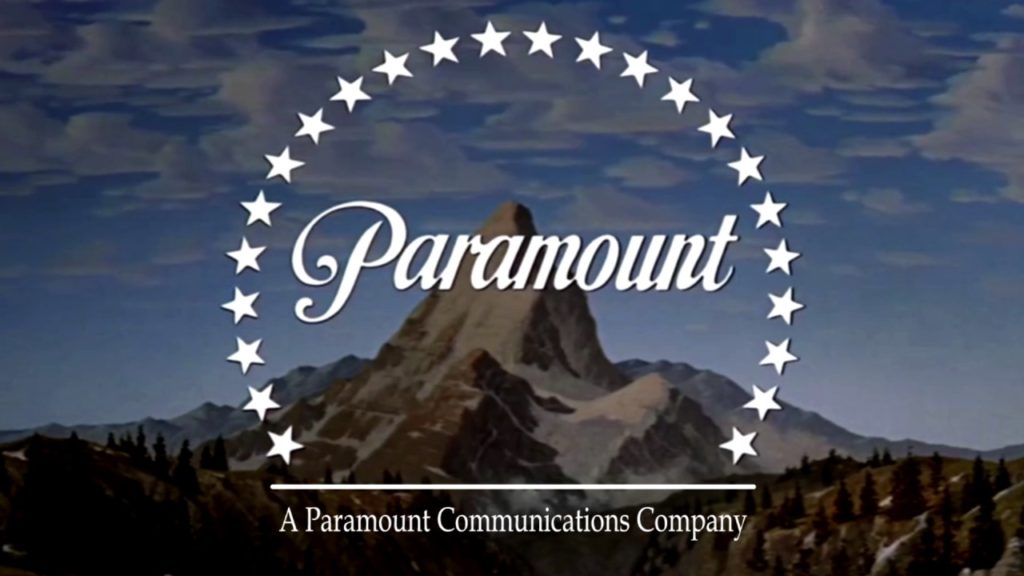
In 1992, Paramount Communications Inc. set their sights on the theme park business. But rather than trying to rival Disney or Universal in scope, Paramount had other plans. Paramount wouldn’t waste time and energy building their own parks from scratch in built-out destinations like California and Florida. Instead, they’d purchase already-successful regional parks and re-brand them.
These Paramount Parks could add just a dash of movie magic to compete with other regional parks like Cedar Point and Six Flags. It was perfect. Now, Paramount just needed to find some parks for sale.
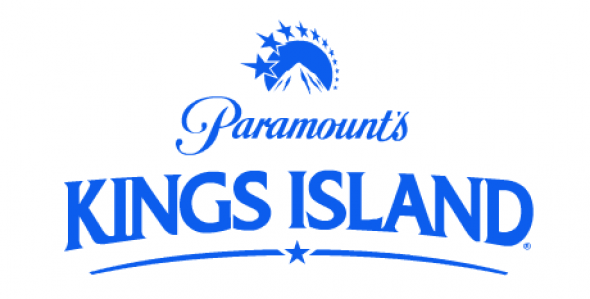
Luckily, the Kings Entertainment Company (internally bought and separated from Taft in 1984) was willing to part with theirs. Five of the parks owned by KECO were taken over and re-branded:
- Paramount’s Kings Island (near Cincinnati, Ohio)
- Paramount’s Kings Dominion (near Richmond, Virginia)
- Paramount’s Carowinds (near Charlotte, North Carolina)
- Paramount’s Great America (in Santa Clara, California)
- Paramount Canada’s Wonderland (in Vaughan, Ontario)
Now supercharged with access to the licensing catalogue of Paramount Pictures, Kings Island and its sister parks would enter their next era. For better or worse, Paramount’s cinematic branding kicked in from the start.
Lights, cameras, action!
What difference would Paramount’s new ownership make? Take for example the first addition to Kings Island post-Paramount takeover: a suspended, swinging coaster (in the same coaster family as another Lost Legend: Big Bad Wolf at Busch Gardens in Virginia) set along the forested hills and ravines of the park.

The 1993 opening of the ride introduced some entry-level atmosphere and theming. The attraction opened with a steaming aircraft carrier station, “Danger Zone” soundtrack, and bright red stripes fitting the new, cinematic name, Top Gun: The Jet Coaster.
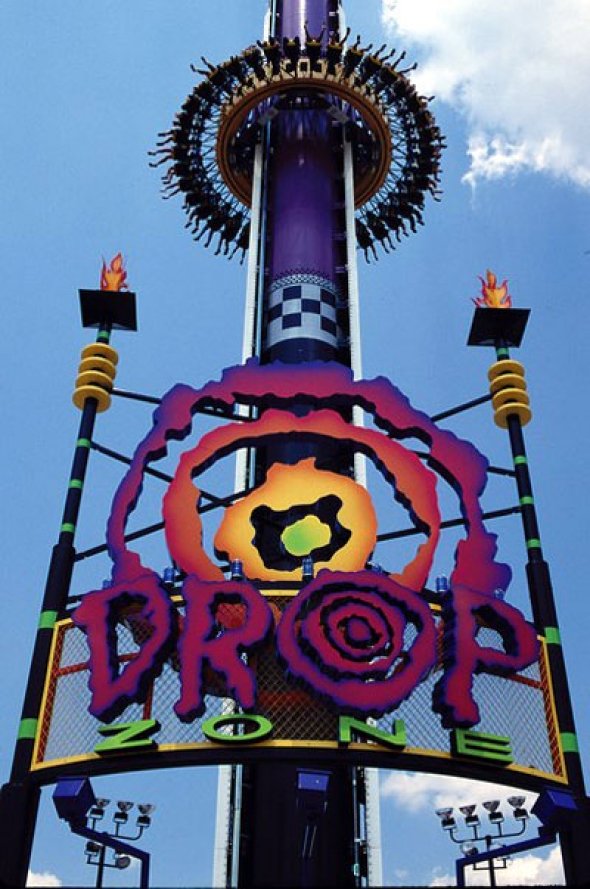
In 1999, the themed land Top Gun was placed in was reimagined from scratch around it. The PARAMOUNT ACTION ZONE was born, ostensibly themed to a bright, loud, sparse Hollywood backlot where you became the star.
Aside from impromptu stunt shows and action film demonstrations around its central studio-water-tower plaza, the land initially featured two new rides in an all-at-once cinematic expansion: FACE/OFF (an inverted boomerang coaster wherein riders were positioned forward-backward-forward-backward to stare into the eyes of fellow thrillseekers), and the record-breaking DROP ZONE: Stunt Tower, casting riders as extras in a freefall stunt.
And they still weren’t done! Remember The Beast, terrorizingly the woods outside of Rivertown since 1979?
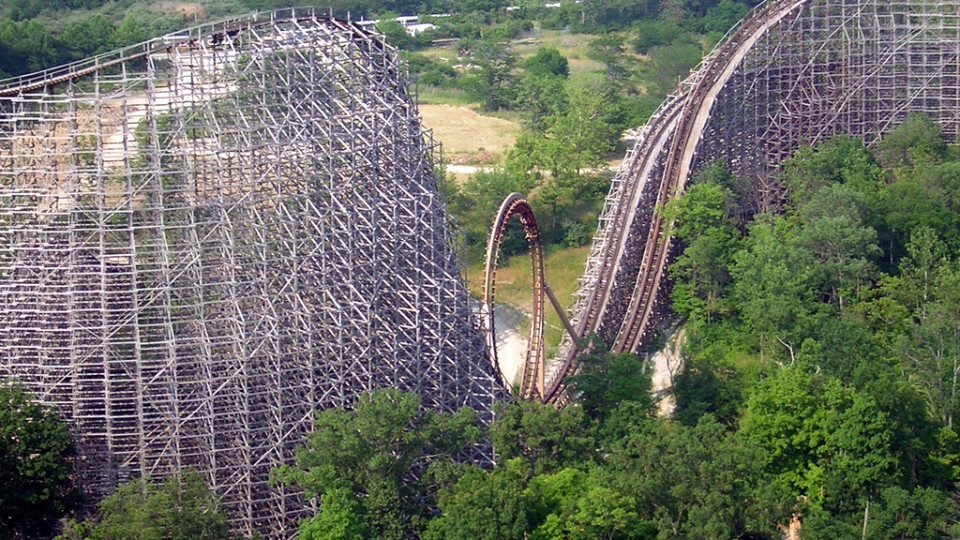
In true cinematic fashion, Paramount decided that what any ’70s horror-camp-classic needs is a loud, brash, big-budget sequel. So in 2000, Paramount Action Zone became home to SON OF BEAST – the tallest, fastest, second-longest (leaving the record to its father) and only looping wooden roller coaster on Earth. (Son of Beast was like many sequels: a critical and commercial flop. The astounding engineering marvel lasted less than a decade before closing for good, earning its own in-depth Lost Legends: Son of Beast feature here.)
Son of Beast might not have made many fans, but Paramount’s cinematic style would come to a head in the park’s addition for 2002… Something mysterious.
Lara Croft: Blockbuster
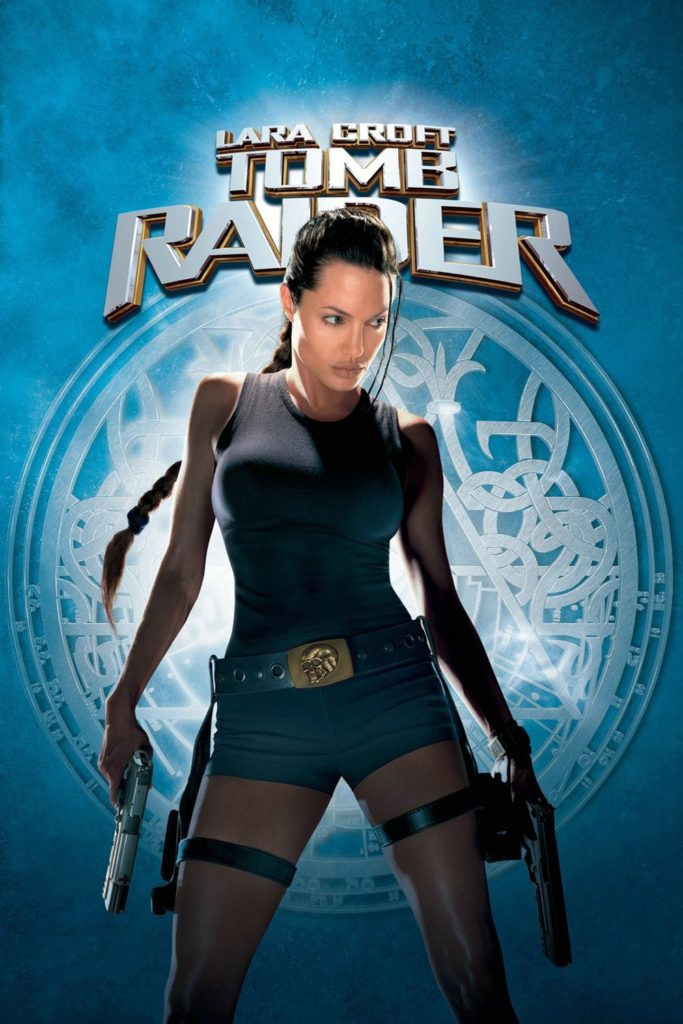
In 2001, Paramount Pictures released Lara Croft: Tomb Raider, drawn straight from the pixelated world of 1996’s Tomb Raider video game series. To be sure, the film performed pretty disastrously with critics. But it did have something going for it: chiefly, Angelina Jolie. Then a little-known actress, Tomb Raider launched Jolie into stardom.
If you can believe it, there hadn’t been a genuine female-led summer blockbuster since 1979’s Alien over two decades earlier, and Jolie’s headlining debut in Tomb Raider shattered box office records for both female-led action films and big screen video game adaptations. The film earned nearly $300 million, and Paramount moved to fast-track both the 2003 sequel (Lara Croft: Tomb Raider – Cradle of Life), and a presence in its biggest marketing opportunity: its theme parks.
And why not? It stood to reason that Tomb Raider might just be Paramount’s modern equivalent of Indiana Jones – an endlessly entertaining, adventurous, globe-trotting film series that could see Jolie’s Lara Croft encounter ancient curses, forbidden temples, and lost treasures around the globe. And in 2001, Paramount’s Kings Island imported the multi-armed warrior goddess Brahma from the film, positioning it before the Royal Fountains to announce their new, epic attraction for 2002…
The legend arises…
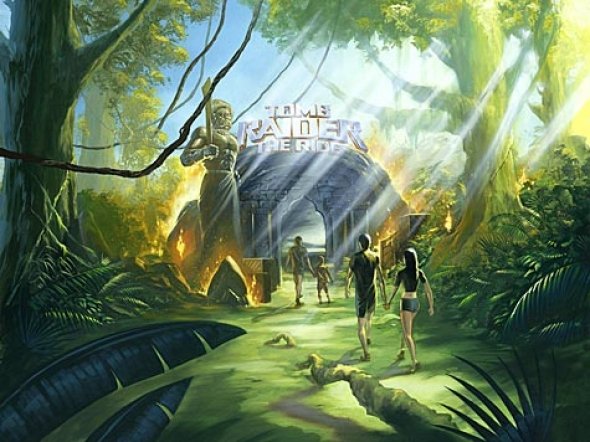
In the park’s forested Rivertown, near the quaint entrance to the legendary Beast, Paramount’s Kings Island would open a “totally immersive dark ride adventure” called TOMB RAIDER: The Ride.
But if you asked Kings Island guests, industry observers, or Kings Island message boards, you wouldn’t find anyone who knew exactly what TOMB RAIDER: The Ride was or what it would do. Constructed in complete secrecy inside of a towering show building, imaginations ran rampant…
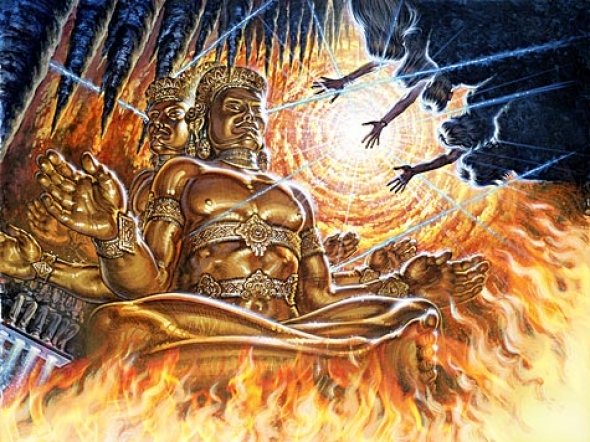
A few scattered pieces of concept art seemed like lofty goals for a simple, seasonal park in Ohio while simultaneously revealing nothing of the ride’s nature. But if Paramount’s Kings Island were willing to invest $20 million – the price tag of a shiny, new 200-foot roller coaster – then they must be confident that TOMB RAIDER would wow audiences… And most importantly, that those audiences would get in line without knowing (or maybe, because they didn’t know) what TOMB RAIDER even was.
So what on Earth did visitors find when they stepped into the ancient stone cavern that had emerged in Rivertown in 2002? Read on as we step inside…


